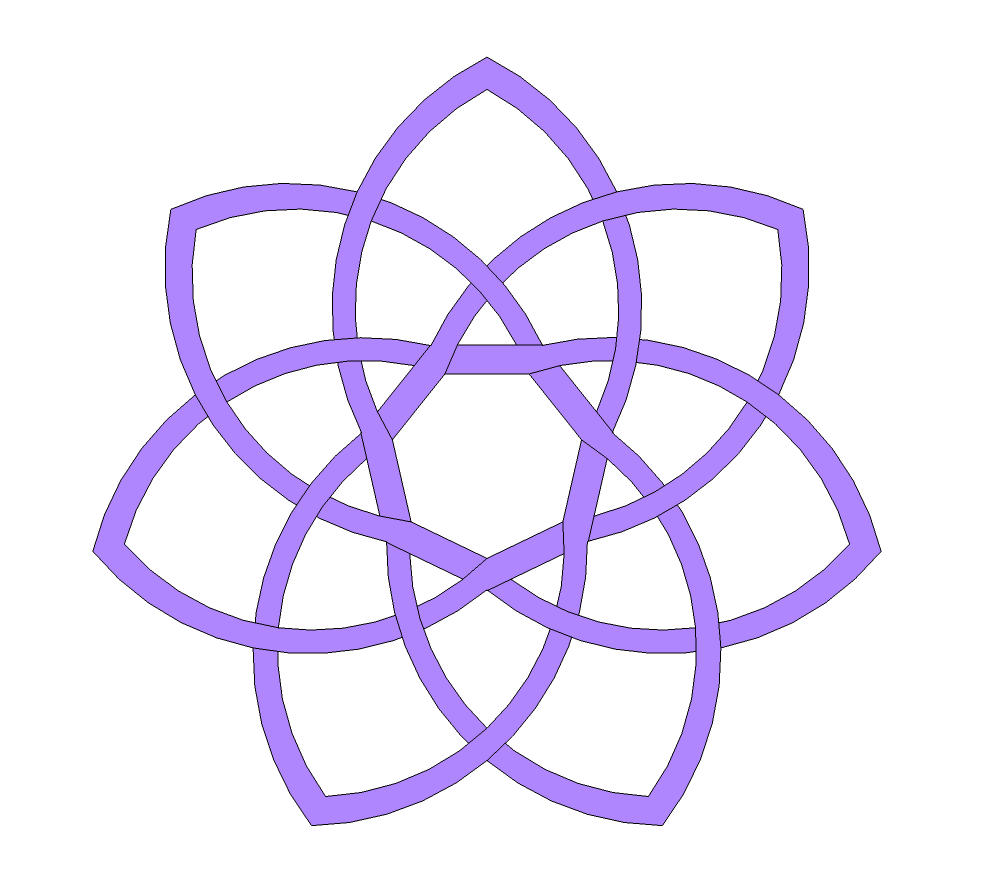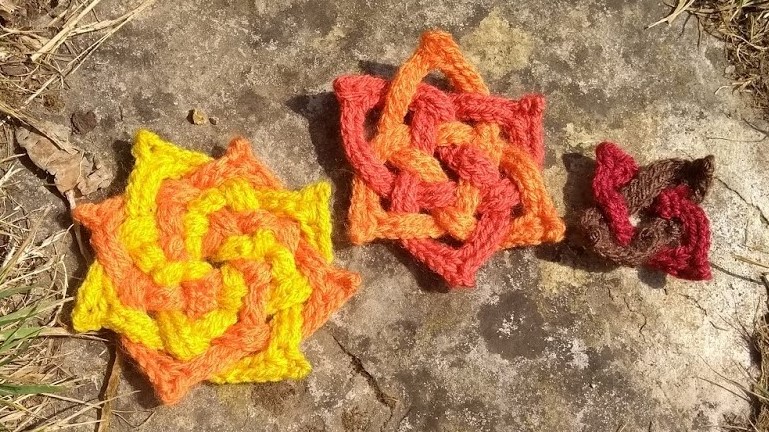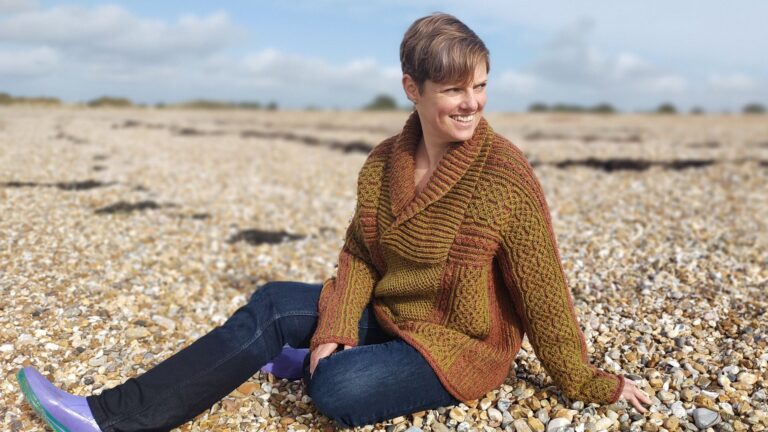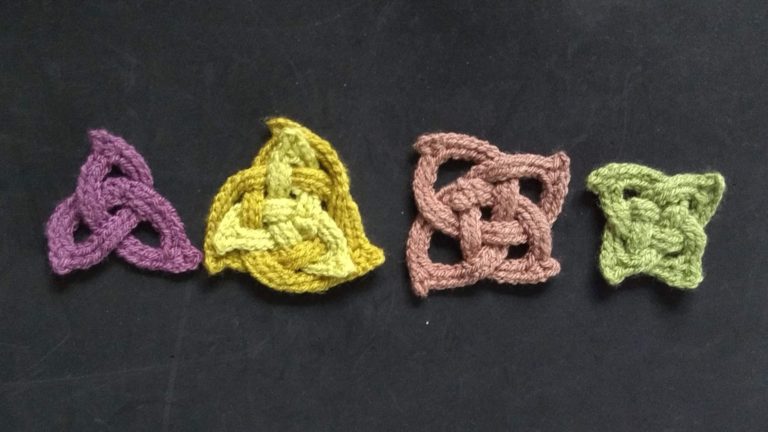Hello and welcome back to this series of posts on celtic knot crochet motifs. Today we are going to cheat to make some of the larger knots which quickly become complex with the continuous loop method. We can simplify by using a double loop knot rather than a single loop. This has the advantage that the finished knot is also smaller- the hexagonal version would make a good centre piece for a hexagonal crochet blanket. We will definitely cover hexagons and octagons – perhaps we might even dare to get to a ten point knot. Let’s go.
Double loop knots
I have decided to call this family of knots the double loop knots, because they are made up from two different looping strands. The idea is fairly simple; a hexagon can be made by combining two triangular knots together. This reduces the number of crossing in the interlace and so reduces the complexity of the final knot. Let’s take a closer look at the construction.
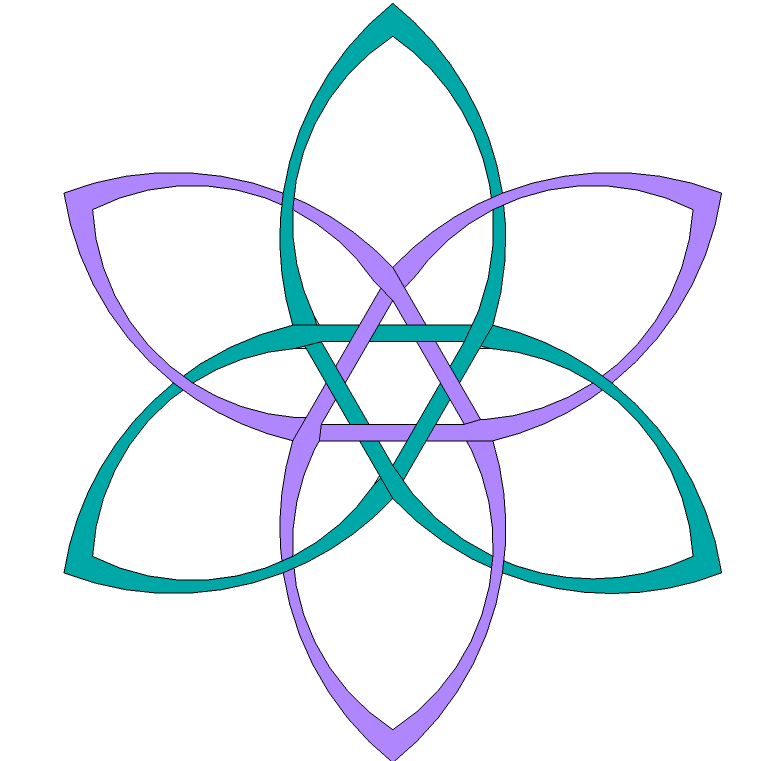
We can start tracing the route of the strand from one of the points. As this is based on continuous loop knot, the path is similar. It curves from the point to the opposite side of the knot before returning to form a point. This time however, it does not form the adjacent point, but misses one to form alternate points. The second strand fills in the remaining points. As before, crossings follow the over under over under sequence throughout the double loop knot and a smaller version of the overall shape is made in the centre; here it’s a hexagon.
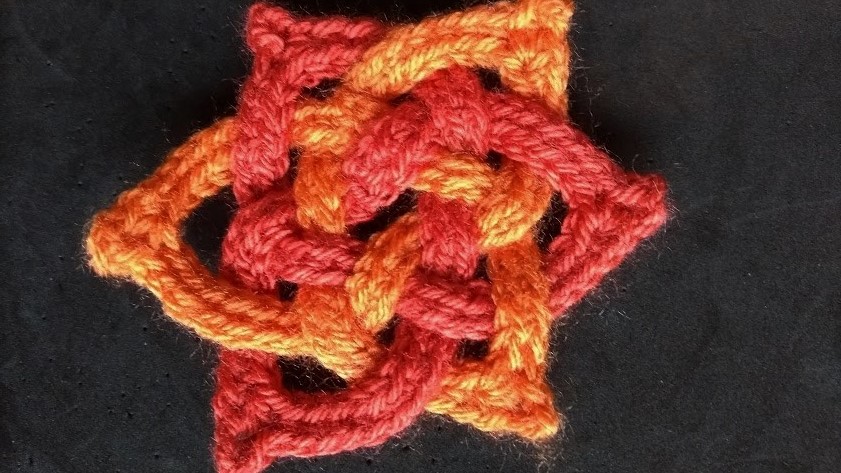
Hexagonal double loop knot
When crocheted with DK yarn on a 4 mm hook, this motif measures approximately 8 cm (3 inches) from point to point.
Instructions are given in UK terms. To convert to US terms: dc = sc. The pattern is the same as the large triangle which forms part of the double trinity knot.
Row 1: *ch 12, picot, ch 12. Repeat from * twice more.
Row 2: ch 1, *1 dc into next 11 stitches, dc3tog, 1 dc into next 11 stitches. Repeat from * twice more.
Fasten off, leaving a tail to weave in later.
If you prefer working by chart, the repeat sequence is given below (between indicators 1 and 2). You need to work this three times, then ch 1 to turn the row.
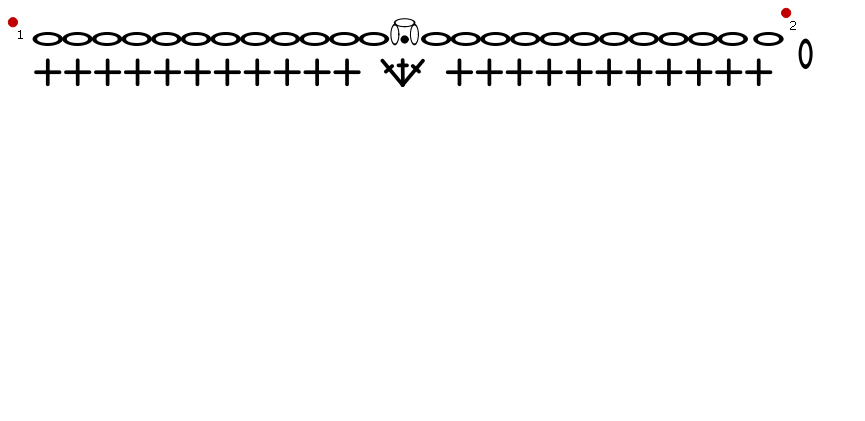
The next step is to weave the double loop knot together. You can make the first triangle knot independently from the second.

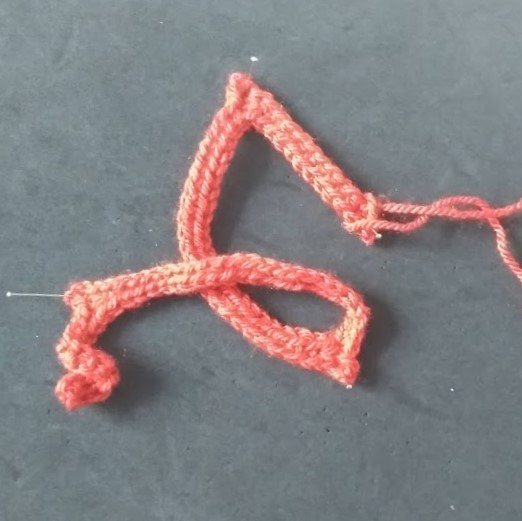
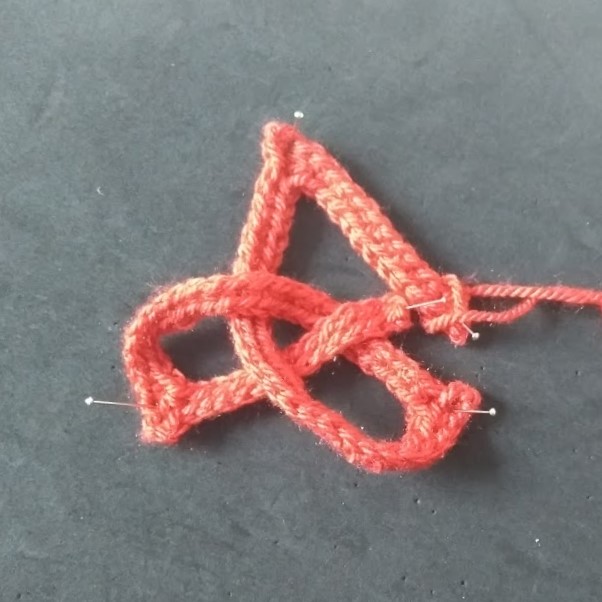
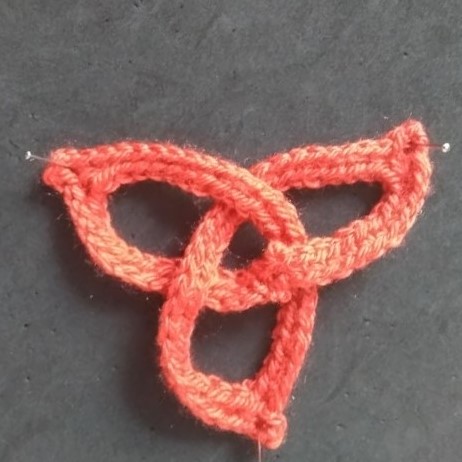
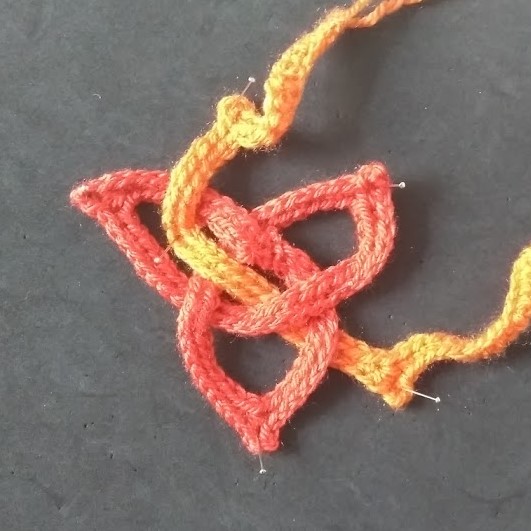
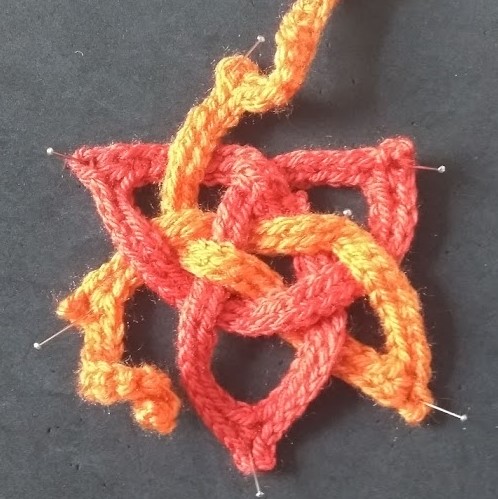
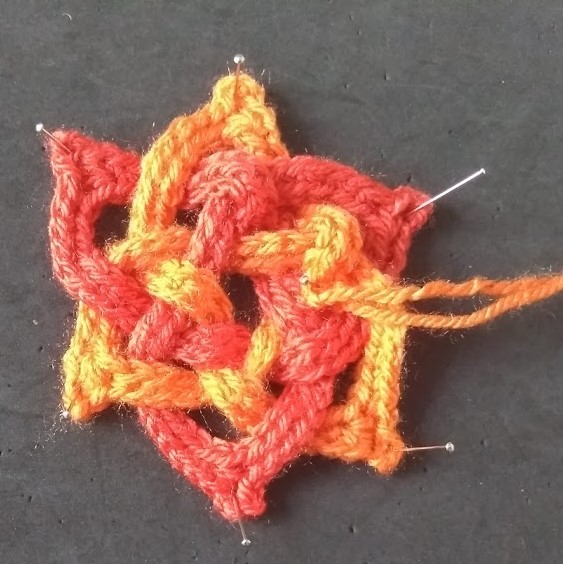
Step 1
Place the first point to the top, with the tails to the right. Bring the other end down and around to pin the second point.
Step 2
Make the third point of the triangle at the bottom left, passing over the existing strand.
Step 3
Complete the first triangle, by returning to the beginning to complete the loop. Pass under the first strand and over the second. Join ends.
Step 4
Step 5
Pin the new strand at the top with the tails to the right. Sweep down and round to the bottom right, passing over the first triangle, the under BOTH the third and fourth strands.
Step 6
Now head back around to the bottom left. Again, we are going to break the over under sequence as we will return to fill these in at the end. You need to pass over the first two strands of triangle 1, then under, over (triangle 2 strand) and under again.Step 7
The last step is to weave back to the start to complete the second triangle. Look at the picture carefully, to make sure that you pass in the correct order and place. The sequence is over the first triangle, under the second triangle, over then under the first triangle and join. You may need to bring the strand with the tails down from the top in order to make the join. Have a final check of the whole motif to check the over under sequence is correct, then sew the ends together and weave in ends.Other variations
This is a quick way to make quite complex looking knots. You can work the loops in two different colours, as I have done, or in a single colour to capture the look of the continuous loop knot. There are a few things to bear in mind if you choose to develop your own knot. As the knot becomes larger you may want to add more breathing room for the interlace work by adding additional chain/ dcs between the picot points. You may also want to increase the thickness of the strand with trebles at the picot (see this technique in the pattern for the hexagonal continuous loop knot). To help with exploring different shapes, I have drawn out the family below.
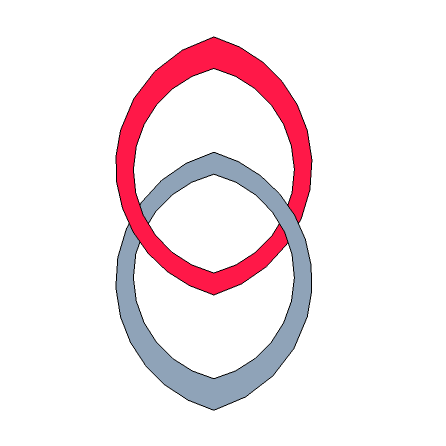


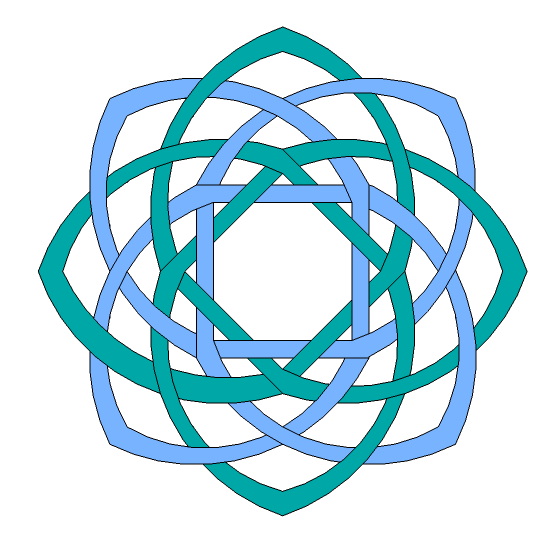
When you have an even number of points (for example a hexagon) one strand makes the odd points (1,3 and 5), and one strand makes the even points (2,4,6). It helps to think about the shape as a clock face. The next odd strand after 5 would be 1 again (missing out 6). We can apply the same ideas to an odd regular polygon, for example a pentagon. This time though, something interesting happens, especially if we miss out different numbers of points. If we start at 1, and miss every two points, one strand can make the entire knot (in the order 1, 4, 2, 5, 3). In short, this construction makes a simpler continuous knot for odd polygons.
I’ve given the diagrams below for a pentagon and heptagon. Discovering a way to form a simpler pentagon was just too tempting. Could two of these be combined to make a ten point motif? I might just have to find out!

